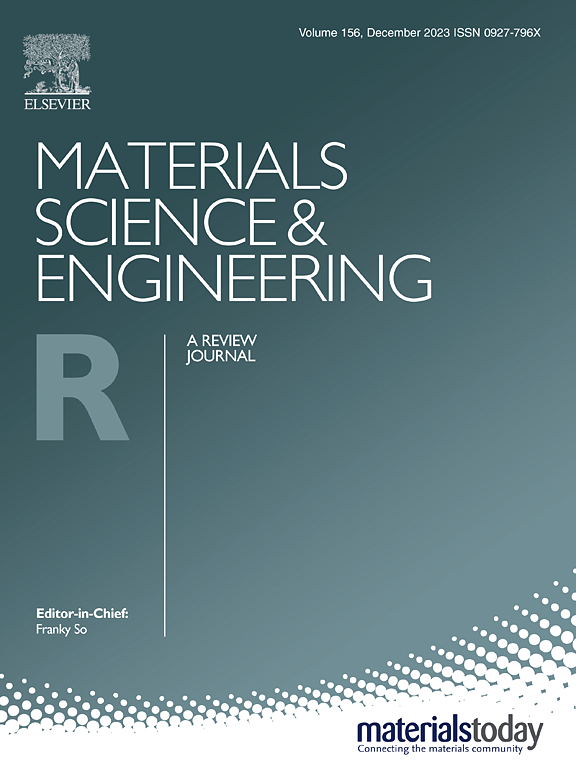生物医学应用3D打印压电材料的最新进展
IF 31.6
1区 材料科学
Q1 MATERIALS SCIENCE, MULTIDISCIPLINARY
引用次数: 0
摘要
自我维持技术和智能材料的最新进展促进了各种能够捕获生物医学应用能量的植入式装置的发展。值得注意的是,压电材料从应力中产生电力,使设备能够有效地将各种形式的机械能转换为比摩擦电和电磁技术更高输出的电能。介绍了近年来采用增材制造(AM)技术制备的压电器件的性能评估和可能的生物医学应用,以及材料选择、制造工艺、使用增材制造技术的困难和压电器件的性能。这篇综述总结了压电器件在生物医学上的应用,包括人体健康监测、生物分子传感、医疗植入物和骨再生,所有这些都是使用基于激光(容器光聚合和粉末床熔融)和无激光(材料喷射和挤压)的3D打印技术制造的,用于生产压电单晶、陶瓷、聚合物和复合材料。增材制造技术在开发和制造复杂的定制压电器件方面具有重要意义,可以为植入医疗传感器,组织工程和其他健康监测系统提供更高效和生物相容性的压电器件。未来的方向是优化AM工艺以获得更好的材料性能,探索新的压电材料,并加强这些设备与医疗系统的集成,以实现个性化的医疗保健解决方案。本文章由计算机程序翻译,如有差异,请以英文原文为准。
Recent progress in 3D printed piezoelectric materials for biomedical applications
Recent advancements in self-sustaining technology and intelligent materials have facilitated the development of various implantable devices capable of capturing energy for biomedical applications. Remarkably, piezoelectric materials generate electricity from stress, enabling devices to efficiently convert various forms of mechanical energy into electricity with higher output than triboelectric and electromagnetic technologies. The performance assessment and possible biomedical applications of recently developed piezoelectric devices prepared by additive manufacturing (AM) technologies, along with material selection, manufacturing process, difficulties using AM technologies, and piezoelectric device performances. This critical review summarizes the biomedical applications of piezoelectric devices, including human healthcare monitoring, biomolecule sensing, healthcare implants, and bone regeneration, all fabricated using laser-based (vat photopolymerization and powder bed fusion) and laser-free (material jetting and extrusion-based) 3D printing techniques for producing piezoelectric single crystals, ceramics, polymers, and composite materials. AM technologies significance in developing and manufacturing complicated, customized piezoelectric devices enables more efficient and biocompatible for implanted medical sensors, tissue engineering, and other health-monitoring systems. Future directions point towards optimizing AM processes for better material properties, exploring new piezoelectric materials, and enhancing the integration of these devices into medical systems for personalized healthcare solutions.
求助全文
通过发布文献求助,成功后即可免费获取论文全文。
去求助
来源期刊

Materials Science and Engineering: R: Reports
工程技术-材料科学:综合
CiteScore
60.50
自引率
0.30%
发文量
19
审稿时长
34 days
期刊介绍:
Materials Science & Engineering R: Reports is a journal that covers a wide range of topics in the field of materials science and engineering. It publishes both experimental and theoretical research papers, providing background information and critical assessments on various topics. The journal aims to publish high-quality and novel research papers and reviews.
The subject areas covered by the journal include Materials Science (General), Electronic Materials, Optical Materials, and Magnetic Materials. In addition to regular issues, the journal also publishes special issues on key themes in the field of materials science, including Energy Materials, Materials for Health, Materials Discovery, Innovation for High Value Manufacturing, and Sustainable Materials development.
 求助内容:
求助内容: 应助结果提醒方式:
应助结果提醒方式:


